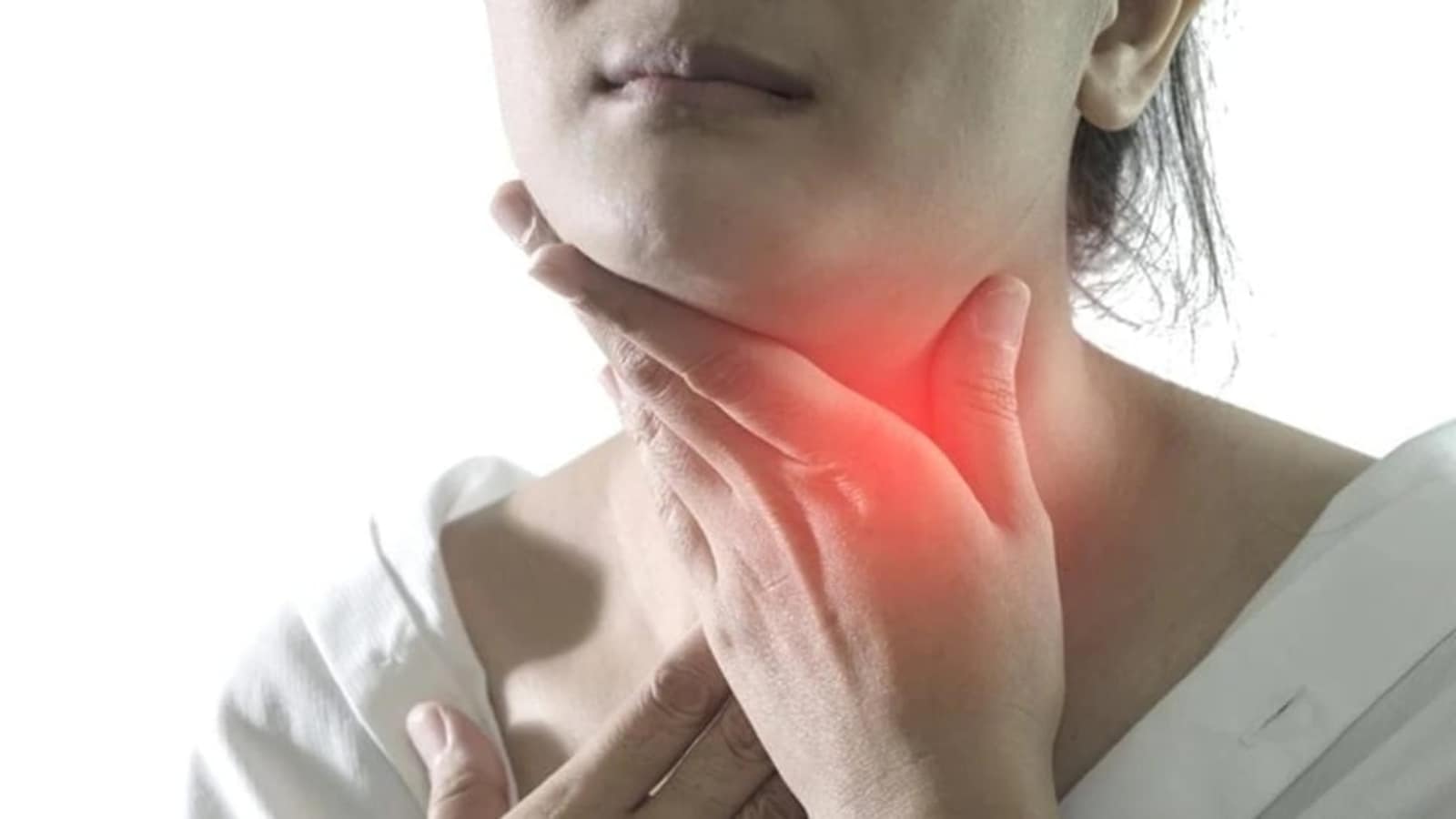
[ad_1]
Hyperthyroidism, commonly referred to as an overactive thyroid, is characterised by an excessive production of thyroid hormones by the thyroid gland where these hormones play a crucial role in regulating various bodily functions, impacting nearly every major organ and notably, hyperthyroidism extends its influence to the skin, as the surplus of thyroid hormones accelerates bodily functions. This heightened activity manifests in increased blood flow, metabolic rate and cell growth, collectively contributing to significant effects on skin health.

In understanding the intricate connection between hyperthyroidism and skin well-being, it becomes imperative to explore the symptoms and employ effective strategies to safeguard the skin from the repercussions of this thyroid disorder.
Understanding the Impact of Hyperthyroidism on Skin Health
In an interview with HT Lifestyle, Dr Shweta Shetkar, MBBS, DDV, Dermatologist and Cosmetologist at Amaryllis Skincare Clinic in Mumbai, revealed that hyperthyroidism can exert profound effects on your skin, leading to various issues due to the accelerated growth of skin cells and in contrast to hypothyroidism, which is associated with dry and pale skin, hyperthyroidism manifests in distinctive skin problems –
1. Skin Rash: Typically emerging in skin creases, a rash is a common manifestation of hyperthyroidism.
2. Hives (Urticaria): Painless, raised patches of skin, often accompanied by itching, may develop as a result of hyperthyroidism.
3. Itchiness: Itching sensations may arise, whether or not rashes or hives are present.
4. Skin Discoloration: Affected areas may exhibit discoloration, with a characteristic waxy and hardened texture.
5. Unusual Warmth: The heightened metabolic rate associated with hyperthyroidism can lead to increased heat sensitivity, resulting in warm and sweaty skin.
She highlighted, “The primary contributor to hyperthyroidism is Graves’ disease, a condition often accompanied by pretibial myxedema. This secondary skin condition manifests as lumpy and inflamed skin on the lower legs, frequently occurring alongside eye bulging and swollen fingers, collectively known as Graves’ dermopathy. Understanding these skin manifestations is crucial for comprehensive management and care in individuals with hyperthyroidism.”
Understanding the Characteristics of a Hyperthyroid Rash
According to Dr Shweta Shetkar, the appearance and sensations of a hyperthyroid rash can vary depending on individual factors such as skin tone. She explained, “The rash may manifest in shades of purple, red or brown and could be accompanied by the development of raised patches known as hives. A hyperthyroid rash is often characterised by itching and pain. The affected skin may exhibit warmth, and individuals may experience heightened sensitivity to heat, leading to sweating.”
She elaborated, “Additionally, redness and sweating may occur in the palms of the hands and soles of the feet, along with facial flushing. Beyond the rash, individuals with hyperthyroidism may also observe thinning of the skin and hair. Recognizing these distinct characteristics is essential for accurate identification and appropriate management of skin-related symptoms associated with hyperthyroidism.”
Effectively Managing and Treating Skin Ailments Caused by Hyperthyroidism
Dr Shweta Shetkar said, “Addressing hyperthyroid-related skin issues involves a comprehensive approach, with both symptom relief and targeted treatment strategies. While topical creams and ointments can provide relief from symptoms like itchiness, it’s crucial to understand that they only offer temporary alleviation and do not address the underlying cause of the rash. The choice of treatment for hyperthyroidism-related skin problems depends on various factors, including the presence of other conditions, the severity of the condition, age, underlying causes, and potential allergies to medications.” She opined that a healthcare professional may recommend –
- Medications: Beta-blockers can assist with symptoms like rapid heartbeat and nervousness, while antithyroid medications such as methimazole may reduce the production of thyroid hormones.
- Radioiodine Therapy: This method employs radioactive iodine to gradually destroy thyroid tissue responsible for hormone production, typically requiring multiple treatments.
- Surgery: In some cases, a surgeon may opt to remove part of the thyroid to decrease thyroid hormone production.
Additionally, Dr Shweta Shetkar said that the short-term therapies directly targeting skin problems may be prescribed, including:
- Topical Steroids: Applied for rashes to alleviate inflammation.
- Steroid Injections: Administered to address inflammation contributing to rashes.
- Antihistamines: Taken orally or applied topically to manage itchiness.
- Botulinum Toxin (Botox) Injections: Used for controlling excess sweating.
The tailored treatment plan will be determined by a healthcare professional based on a thorough assessment of individual health factors and the specific manifestations of hyperthyroidism.
Knowing When to Seek Medical Attention
Dr Shweta Shetkar suggested, “It is advisable to consult a healthcare professional if there are indications of hyperthyroidism, especially when accompanied by skin rashes. A doctor will typically conduct blood tests to assess thyroid hormone levels, aiding in the identification of an overactive thyroid gland.” Immediate medical attention is warranted if –
- Sudden Rash or Hives: If you experience a sudden onset of rashes or hives that rapidly progress, seeking prompt medical advice is essential.
- Additional Symptoms: Contact a doctor urgently if skin issues are accompanied by other concerning symptoms such as difficulty breathing, fever, or drainage. These could signify a more severe underlying condition requiring immediate attention.
Recognising and addressing hyperthyroidism-related skin problems promptly can contribute to early intervention and appropriate management of potential complications.
[ad_2]
Source link








